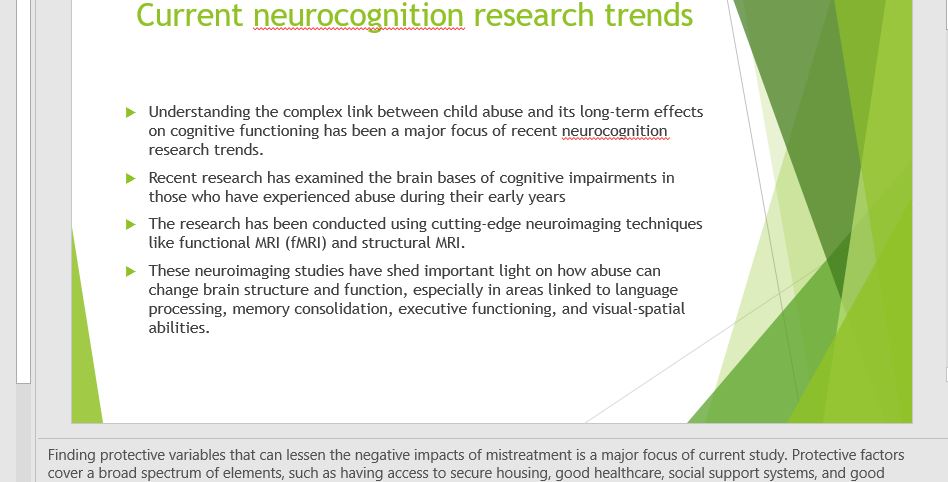Neurocognition Presentation
Childhood maltreatment poses a risk for a variety of developmental, psychological, medical, and neurocognitive conditions that may have long-term consequences. Neurocognitive impairments such as in language, visual-spatial skills, memory, and executive functioning have been found in children who have been maltreated. Protective factors have been found to lessen the likelihood of a child being abused. The identification of protective factors, such as access to housing or healthcare, is important to explore with families who are at risk. For this assignment you will develop a 7-10-slide digital presentation about the current research into neurocognition and preservative factors. Include the following in your presentation: Current neurocognition research trends
An explanation of neurocognitive data found
Current protective factors
An explanation about the preservative data found
A discussion about what the data suggests
Recommended prevention models
Detailed speaker notes that represent what would be said if giving the presentation in person
At least five peer reviewed scholarly references outside the course materials within the past 5 years.
Title slide and reference slide are not included in the slide count. Include speaker notes below each content-related slide that represent what would be said if giving the presentation in person. Expand upon the information included in the slide and do not simply restate it. Please ensure the speaker notes include a minimum of 50-100 words.
Rubric:
Current neurocognition research trends and explanation
Current preservative research trends and explanation
Recommended Prevention Methods
Presentation of Content
Answer preview for Neurocognition Presentation

APA
1250 Words
